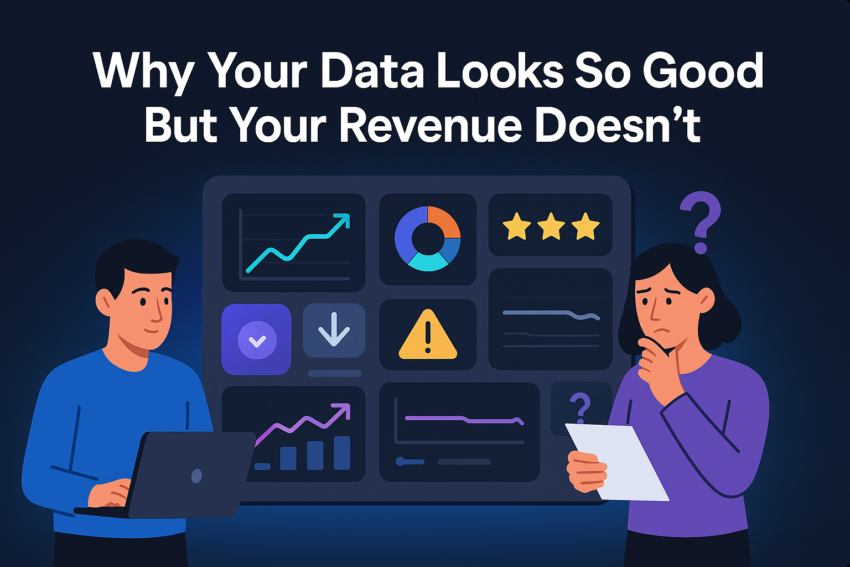Your Marketing’s Missing Link? Information Architecture

Let’s not sugar-coat it. Your digital marketing campaigns might be underperforming not because your SEO’s off, or your ad budget’s too small, or your content isn’t clever enough.
It might just be your website structure.
When your site is a tangled mess of pages, vague labels, and confusing menus, users get lost, Google gives up, and your marketing dollars go to waste.
This is where Information Architecture (IA) comes in — the unsung hero behind successful digital marketing. At Click Click Media, we treat it like the foundation every campaign stands on. Because without it, the smartest strategy still ends up flat.

What Is Information Architecture?
Information architecture is how your website’s content is organised, labelled, and linked. It’s the blueprint that shapes how users interact with your site — and how search engines understand it.
Think of it like walking into Bunnings. If the signage is clear, the aisles make sense, and you know exactly where to go, you’re in and out in minutes. If everything’s all over the place? You’re frustrated, and you walk out.
That’s the difference a strong IA makes. It helps:
- Users find what they’re looking for — quickly and confidently
- Search engines crawl, index, and rank your content
- Your marketing channels work together instead of pulling in different directions
Great IA leads people toward action. It shortens the path to purchase. It clears the way for SEO to do its job and lets your ads land where they actually convert.
Why Most Websites Get It Wrong (Yes, Probably Yours)
We see it all the time:
- Ten services jammed under one generic “Our Services” page
- Blog content floating around with no categories or internal links
- High-value landing pages buried three clicks deep
- Navigation menus that read like a spreadsheet
And then business owners wonder why their bounce rates are high, their rankings are slipping, or their ads aren’t converting. Every one of these issues is a silent revenue killer. And they’re more common than you’d think.

Why IA Matters to Every Marketing Channel You Touch
1. SEO Starts With Structure
Search engines don’t guess. They crawl your site like a map — and if the roads don’t connect, they miss the destination entirely. Clean IA makes your content easier to find, index, and rank. Especially when it comes to local SEO, category pages, or content clusters, structure is everything.
Want to rank for “Solar Installation Sydney”? Then that page needs a clear URL, a strong heading, and a top-level position in your hierarchy — not buried under five layers of “About Us” and “Services.”
2. Better UX, Better Conversions
IA is UX’s best friend. When visitors can find what they need with minimal clicks, they’re far more likely to take action. Whether it’s submitting a form, buying a product, or booking a service, good structure removes friction.
Case in point: We worked with a Sydney Paws Petdoors whose site had solid traffic — but underperforming conversion. Their key service pages were hidden. We overhauled the site structure, elevated those pages, and within two months, traffic to their conversion points tripled. Leads followed.
3. Ad Campaigns Rely on It More Than You Think
Paid traffic is only as good as the landing pages it hits. If your site can’t support campaign-specific landing pages — or if those pages live in a forgotten corner of your sitemap — you’re torching your budget.
We build websites where ad traffic lands exactly where it should. No clutter. No confusion. Just clear CTAs and fast-loading, context-specific content.
4. Content Strategy Doesn’t Work Without It
You can publish all the blogs, guides, and resources you want — but without solid IA, it’s just noise. A good structure lets you group content into topic clusters, build internal links that boost SEO, and guide users through a journey that builds trust.
If you’ve ever looked at your blog and thought, “Where does this even go?” — it’s time to rethink your structure.
How to Fix It: A Practical Framework
Here’s how we approach IA for our clients — no fluff, no jargon:
Map What Matters: Identify your top products, services, locations, and customer journeys. These are the pillars of your structure.
Name Things Clearly: Use simple, direct labels. If you’re a tradie, say “Plumbing Services.” If you’re a SaaS company, say “Pricing.” Don’t get cute — get clear.
Create Clean URLs:
Use: /solar-installation-sydney
Not: /services?id=25&page=2&cat=solar
Cluster Your Content: Plan your blogs and resources around themes. Link them together. Build depth, not chaos.
Work With People Who Actually Get IA: Many designers focus on aesthetics. We focus on performance. IA isn’t just about how things look — it’s about how they work.
How Click Click Media Makes IA Work for Marketing
We’ve restructured websites across every industry — from trades and medical to SaaS and ecommerce — turning convoluted sites into scalable, high-performing machines.
We don’t just tweak a few menus. We look at your entire digital ecosystem and rebuild the foundation so your SEO, paid media, content, and CRO can do their job properly.
And it works. We’ve seen clients cut their CPA in half. We’ve seen organic traffic grow 3x in under a year. We’ve seen revenue rise without changing a word of copy — just through better IA.
If you’re spending money on digital but still not seeing results, there’s a good chance IA is the missing link.
Final Word: Don’t Let Bad Structure Tank Great Strategy
A beautiful homepage and a clever ad can only go so far. If your users can’t find what they need, they won’t convert. If Google can’t crawl your site, you won’t rank. If your campaigns can’t land where they should, you’ll keep burning budget.
That’s the silent cost of bad information architecture.
And it’s why we make it a priority in every project we touch.
Wondering if your IA is helping or hurting your marketing?
Get in touch and get a free, no-obligation audit with the team at Click Click Media. We’ll show you what’s working, what’s holding you back, and how to fix it — fast.



